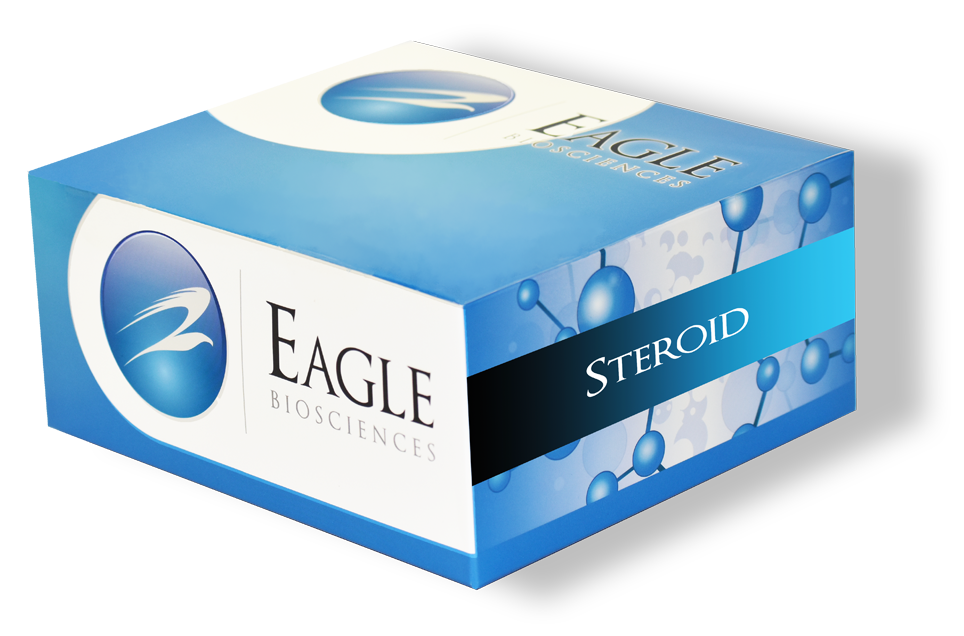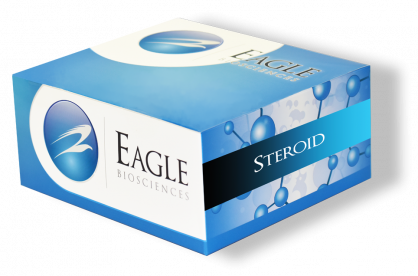Progesterone Saliva Sensitive ELISA Assay
The Progesterone Saliva Sensitive ELISA Assay is For Research Use Only
Size: 1×96 wells
Sensitivity: 1.477 pg/ml
Incubation Time: 2 hours
Sample Type: Human Saliva
Sample Size: 50 µl
Controls Included
Product manufactured in the USA
Assay Background
Progesterone (4-pregnen-3, 20-dione) is one of the 21-carbon steroids secreted by the corpus luteum of the ovary in females during the normal menstrual cycle. It is also produced in low concentrations by the adrenal cortex in both males and females. In pregnancy the placenta is a major source of progesterone after the seventh gestational week.
Progesterone is synthesized from cholesterol. Of all the biologically active steroids in man progesterone is the most closely related to cholesterol and transformation of cholesterol into progesterone involves only a few biosynthetic steps.
Most of the progesterone in the circulation is bound to carrier proteins. Approximately 79% is bound to albumin and about 18% to cortisol binding globulin (CBG). Only a small fraction of progesterone – about 2.5% in non-pregnant women of fertile age – occurs as free hormone. It has been proposed that only the free hormone fraction is metabolically active. In saliva the majority of progesterone occurs in the free form and enters the saliva via intracellular mechanisms and reflects the free form in serum.
Progesterone has two main biological functions. First, it transforms the estrogen stimulated endometrium into the secretory phase, which allows implantation of the fertilized ovum. Secondly, it sustains the pregnancy by decreasing uterine contractility. During the follicular phase progesterone concentrations are low prior to the mid-cycle gonadotropin surge. Immediately after the LH surge concentrations begin to rise rapidly and reach maximum levels at the middle of the luteal phase. Circulating levels of progesterone together with estradiol have been used to evaluate luteal function in patients with menstrual disorders and infertility.
After conception the progesterone concentrations fluctuate at the midluteal levels for the first 5 – 6 gestational weeks. The luteo-placental shift occurs around the seventh week, after which the progesterone levels show a sustained rise, reaching peak levels 3-6 weeks before term. At term the levels have decreased by 20-30% of their peak level. Measurement of maternal progesterone level is useful for confirming the diagnosis of ectopic pregnancy. Progesterone values in ectopic pregnancies are significantly lower than in normal intrauterine pregnancies. Measurements of the maternal progesterone concentrations have also been suggested for the clinical assessment of threatening abortion, hydatidiform mole and rhesus isoimmunisation.


